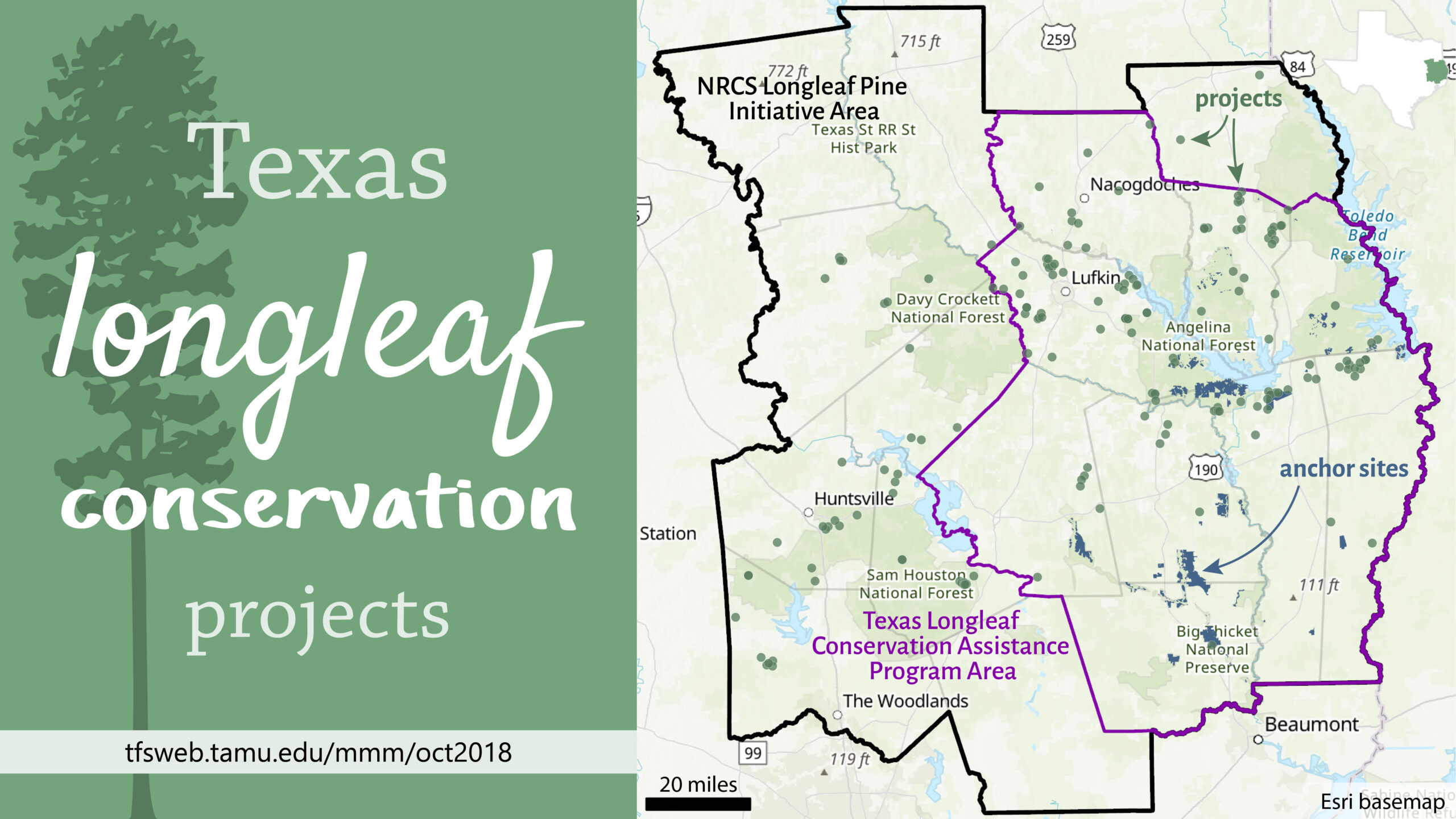Last month we looked at the status of longleaf pine in East Texas; its coverage has diminished significantly over time. Is this important, and if so, what can be done about it?

Longleaf ecosystems have some of the most diverse and unique understories, second only to tropical rainforest in plant diversity. These ecosystems and their associated habitat host numerous game and non-game wildlife species including imperiled species such as the gopher tortoise and red-cockaded woodpecker. Longleaf pine is also less susceptible to insect, fire and wind damage than other species.
These benefits alone are more than enough reason to conserve and restore longleaf pine ecosystems. And that’s just what is happening. Groups like The Longleaf Alliance and America’s Longleaf Restoration Initiative work to manage and restore longleaf pine forests through partnerships with private landowners, government agencies, conservation groups and others.
In Texas, landowner assistance for longleaf pine restoration is provided through the Texas Longleaf Conservation Assistance Program funded by the National Fish and Wildlife Foundation. The map shows projects supported by this program as well as projects funded by the US Fish & Wildlife Service. It also shows the NRCS Longleaf Pine Initiative eligibility area. The anchor sites are places that are currently forested with longleaf pine.